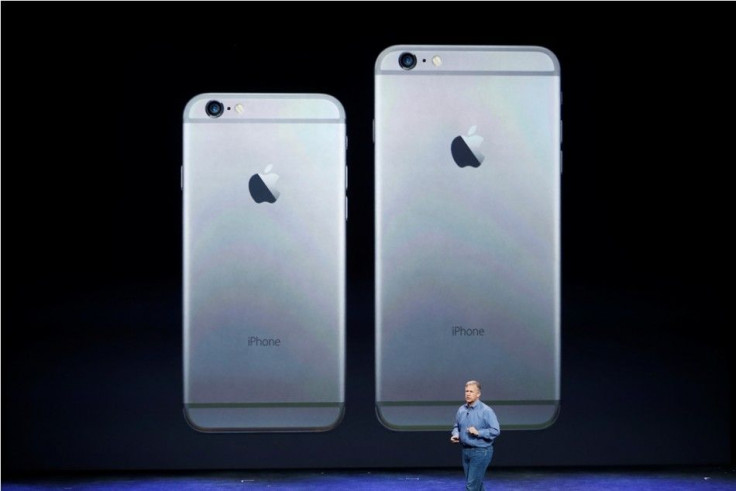Motorola DROID Turbo vs. Apple iPhone 6 - Specifications, Features And Price Showdown

The mighty Motorola DROID Turbo smartphone can be availed from carriers starting today, Oct. 30. The Apple iPhone 6, on the other hand, was released in September. Readers who are interested in the latest Motorola DROID Turbo or the Apple iPhone 6 should check out this comparison.
Display, Design And Size
The DROID Turbo features a 5.2-inch Super AMOLED display and a killer Quad HD resolution of 1,440 x 2,560 pixels. This combination trickles down to a pixel density of 565 ppi. The iPhone 6, meanwhile, comes with a relatively smaller 4.7-inch LED-backlit IPS LCD display and 750 x 1334 pixels resolution. This translates to a pixel density of 326 ppi.
When it comes to design, Apple has taken a leaf or two from the iPad Air tablet to get the iPhone 6 design right. The smartphone comes with a magnificent metallic exterior that gives the look of ceramic base and the back panel feels very comfortable on the hands. Moreover, the device comes with rounded corners and the overall design makes it look sleeker, Tech Radar reports. Also, the display is made of Ion Strengthened Glass, instead of the heavily-rumoured sapphire crystal material.
Moving on to the DROID device from Motorola, the company has aimed to fix the battery problems persisting in the current-generation devices. Therefore, the Turbo comes equipped with a killer battery unit of 3,900 mAh, which can provide up to 48 hours (2 days) of charge. This means, the configuration is 1,000 mAh+ more than the iPhone 6 phablet and approximately 800 mAh more than the Goliath-like Samsung Galaxy Note 4. On design, the DROID handset looks identical to the 2014 Moto X with the same plastic chassis, according to Mashable.
Speaking of size, the thickness and weight of the Apple handset are 0.27-inch and 129 g respectively, whereas the DROID Turbo is 0.31-inch thick and weighs 169 g. Hence the iPhone 6 is very thin and light when compared to the Turbo.
Hardware, Software And Memory
The DROID Turbo is powered by a superior quad-core (Qualcomm Snapdragon 805) Krait 450 processor, clocked at 2.7 GHz and Adreno 420 GPU. Meanwhile, the iPhone 6 is powered by a dual-core (Cyclone ARM v8-based) Apple A8 processor, clocked at 1.4 GHz and PowerVR GX6450 for graphics. Furthermore, the Motorola device comes with a whopping 3 GB of RAM, whereas the iPhone 6 settles for the perennial 1 GB of RAM, similar to its predecessor.
On the software side, the Turbo runs on Android 4.4.4 KitKat OS. Nevertheless, there is a planned upgrade to v5.0 L in the offing. The iPhone 6, on the other hand, runs on iOS 8, which is upgradable to iOS 8.1. The Motorola device offers 32 GB and 64 GB of in-built storage, whereas the Apple handset comes with 16 GB, 64 GB and 128 GB of storage. As expected, both the handsets do not support microSD card.
Camera And Battery
This is an area the Motorola handset trumps the Apple handset head on. The DROID Turbo features a killer 21 MP rear-facing camera with dual-LED flash and 4K video support, whereas the iPhone 6 sports an inferior 8 MP rear camera with dual-LED flash and digital image stabilization. Plus, the Turbo comes with a 2 MP secondary shooter, while the iPhone 6 settles for 1.2 MP. When it comes to battery, the Turbo is backed by a powerful Li-Po 3,900 mAh unit, whereas the iPhone 6 houses an inferior Li-Po 1810 mAh unit.
DROID Turbo | iPhone 6 | |
Talk Time | 48 Hours | 14 Hours |
Stand-by Time | Not known | 250 Hours |
Additional Features
1. Following other DROID devices, the Turbo also comes with the same aggressive design aided by Kevlar-like finish. The two panel choices include a metallic shell design and a ballistic nylon design. While the former is a metal-coated fibre-glass, the latter comes with military grade material, according to Android Authority. Plus, the Motorola device comes in Metallic Red and Metallic Black, while the Apple handset can be purchased in Space Gray, Silver and Gold hues.
2. The iPhone 6 features the much-appreciated fingerprint scanner Touch ID for unlocking the handset and also for making mobile payments. To enable payments, Apple has introduced a new program dubbed Apple Pay. Apple Pay uses integrated hardware, software and other related services to assist mobile-based payments. In specific, it makes use of the housed NFC antenna, Touch ID, Secure Element and Apple Passbook to facilitate payments. American Express, MasterCard and Visa users can now enjoy Apple Pay service in the U.S. Notably, Apple is working out plans to add other majors in the near future.
3. While the DROID Turbo offers wireless charging facility, the Apple device doesn't. In addition to the standard connectivity options, both the devices support 4G LTE and NFC. Nevertheless, the Turbo goes one step further and supports Infrared port. Speaking of SIM, both the phones employ nano-SIM.
4. Both the phones do not come with water- or dust-proof exterior. To compensate the lack of IP67 certification, the DROID Turbo comes with a water-resistive coating. Implying, the handset can survive accidental water splashes. But then, leaving the device underwater for longer period of time will damage it perennially.
Price
Verizon is offering the Motorola DROID Turbo with 32 GB storage for US$199 and the 64 GB model for US$249, under contract. Notably, the carrier is providing a free one-time screen replacement for the purchased handset, says Android Authority. And the outright price is US$599 (i.e. AU$675). The iPhone 6 16 GB variant, on the other hand, can be purchased for AU$849.95.
Also Read
1. Motorola DROID Turbo vs. Nexus 6 - Two Killer Motorola Handsets' Showdown - [Read]
2. BlackBerry Classic (aka Q20) With QWERTY Keyboard And 10.3 OS To Be Released In December - [Read]
3. Heavily Priced 'BlackBerry Porsche Design P'9983' Is Physical QWERTY Keyboard Lovers' Dream Device - [Read]






